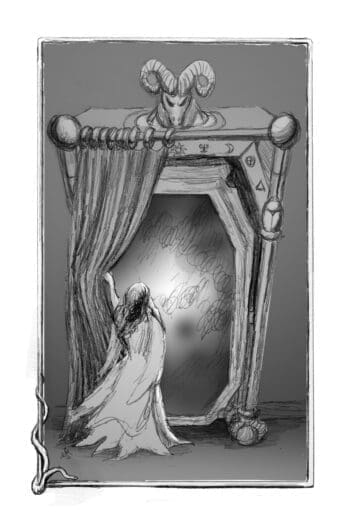Gazing into the soul’s mirror during Lent
By LORRAINE V. MURRAY, Commentary | Published March 22, 2022
In my childhood, my teenage cousins taught me the intricacies of putting on make-up. The two girls would lean into the looking glass and draw black lines around their eyes and brush paint on their lashes, while my sister and I carefully watched. The mirror was a place where mysterious changes happened in minutes.
During Lent, we can peer into a spiritual mirror to discover where changes are needed. Sometimes that’s hard, because we have self-images that don’t sync with reality, but admitting the truth can be a pathway to conversion.
 Reflecting on my past, for example, I see many instances of selfish behavior, which didn’t concern me at the time. The boyfriends I left behind, the friends I hurt, the relatives I disappointed. I’d like to say selfishness is no longer a flaw, but the fault line runs deep.
Reflecting on my past, for example, I see many instances of selfish behavior, which didn’t concern me at the time. The boyfriends I left behind, the friends I hurt, the relatives I disappointed. I’d like to say selfishness is no longer a flaw, but the fault line runs deep.
During Lent, we can “die to self,” which means saying no to our hungry ego, which wants comforts, luxuries and pleasures. We can stop putting ourselves first and choose love over selfishness. After all, when our lives are controlled by the hungry self, it’s difficult to make room for Christ in our hearts.
There are many examples of people choosing love over selfishness. I’ve seen couples who go without extras—and necessities too—so they can pay for their children’s tuition. When my friend’s oven broke down, there wasn’t money for a new one, so the family cooked on an outdoor grill for months. After my aunt’s husband died, she lived a bare bones existence to send her children to Catholic school.
These sacrifices pale when we read stories of poverty-stricken people in other countries. In his book about revolutionary times in Cuba, Anthony DePalma wrote about a husband and wife, who ate only two small meals daily, so the children could be fed.
Recently, I read about a young Ukrainian man, who had fled to Poland during the Russian invasion, but then returned to his home country to fight. “I would love not to fight, and be alive, but this is the time where if I want to be able to look myself in the mirror, I have to go,” he said. He was choosing love of country over selfishness.
We’re surrounded by people who need love, such as the poor, lonely, sick and dying. British author Caryll Houselander writes about a lonely nun at her childhood school, who spoke little English. One day Caryll saw the sister sitting by herself, polishing the children’s shoes, and weeping. The little girl suddenly had a mystical vision of the sister wearing the crown of thorns. She sat next to the sister and provided companionship, while helping her with her task.
Dying to self sometimes means giving the money we were saving for a vacation to the poor. Sometimes it means attending Mass with small, rambunctious children, or telephoning a lonely person, when we’d rather watch a movie.
Who is wearing the crown of thorns in our lives? Maybe a relative struggling with a cancer diagnosis, parents broken-hearted over their son’s illness, children grieving the death of a mother. The more we treat suffering people with compassion, the more we imitate Christ.
In my childhood, the mirror was connected with vanity, since we used it to improve our looks. During Lent, we can ask God for the grace to look into our spiritual mirror and see ourselves as we really are. We also can ask for the grace to transform our souls. Yes, dying to self is a daily struggle, but it helps enlarge our hearts, so we have room for Christ. As St. Paul said, “It is no longer I who live, but Christ lives in me.”
Artwork is by Lorraine’s late husband, Jef (www.jefmurray.com) Her email address is lorrainevmurray@yahoo.com.